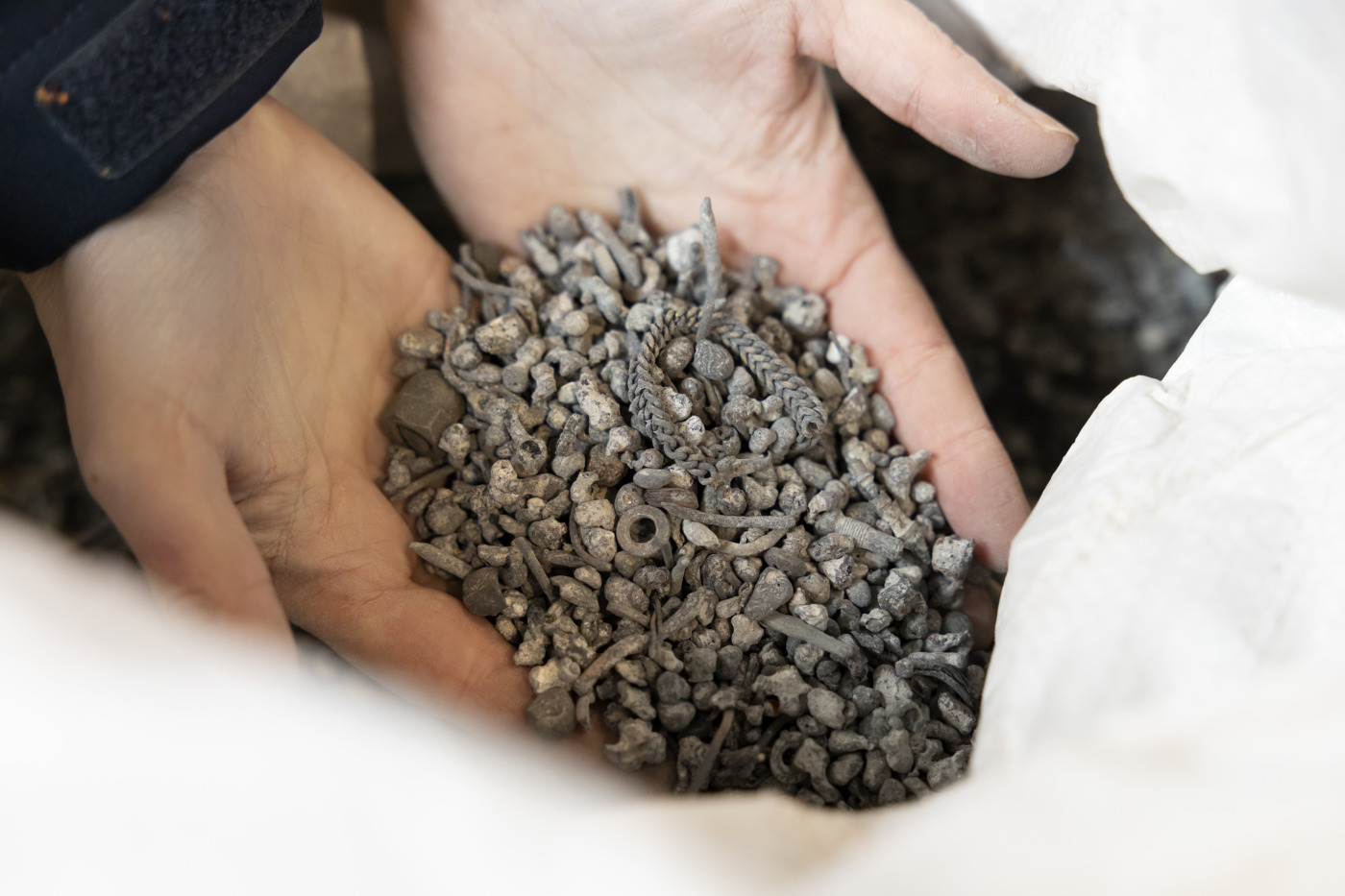Smart characterisation method to analyse heterogeneous waste flow ‘on the fly’
Today many recycling companies struggle with the value assessment of complex material/waste streams. The main issues are that sample-taking and subsequent chemical analysis take a lot of time and money, with a financial uncertainty associated.
This is certainly the case with what are known as bottom ashes, visually homogeneous residues left behind after the incineration of all kinds of waste streams, including household, industrial, and construction waste. Nonetheless, bottom ashes have been processed into aggregates for quite some time, in a process in which metals are recovered as much as possible. Originally, this was only done for the very coarse fraction of the metals. But today, valuable non-ferrous metals such as copper and aluminium are also being extracted from these bottom ashes with a grain size smaller than 20 millimetres.
Adding value to waste streams
There are other useful materials in fine bottom ashes too, such as precious minerals and metals. In recent years, SUEZ has developed a technology for the recovery of particles as small as one-tenth of a millimetre. But without knowledge of the exact content of these waste streams, waste processing essentially depends upon craftsmanship and experience.
To counter this, VITO initiated the development of an in-line characterisation technology in collaboration with XRE and Ghent University to assess seemingly heterogeneous and complex material streams completely – and in real-time. Mass balances can be produced ‘on-the-fly’, eliminating the need for subsampling.
By recovering valuable materials, we add value to end-of-life waste streams while also reducing Europe’s dependence on primary raw materials. And on top of that, you can reduce the amount of landfilled materials. The environmental gain is therefore fourfold.
Kris Broos, Sustainable Materials Management at VITO
A digital twin of the waste stream
In fact, for each material particle, a ‘digital twin’ is created, which can be further assessed in a virtual way. In this technology, the heterogeneous waste particles are dispersed on a conveyor belt as a mono-layer and scanned using three different imaging techniques: A colour camera, a 3D camera, and an X-ray sensor. Thus, the colour, shape, and internal chemical structure of each waste particle can be determined.
The particles are characterised by hundreds of different measured parameters, of which size, shape, chemical structure, and mass are among the most important. The measurement results are immediately uploaded to a computer model that uses them to create a so-called digital twin of the waste stream.
The digital twin enables well-founded decisions. Hence, the processing procedure can be continuously and automatically adjusted and streamlined. Later on, based on the digital twin, the sorting will also take place autonomously.
See straight through materials
With this kind of ‘smart’ waste processing, the outflow properties (the composition of the recovered materials, their quality, etc.) of the process can be continuously predicted.
Sensors for characterising waste have been used for a long time. But characterisation based on three different scanning techniques is the future. This can significantly improve the recycling of bottom ashes and their derived streams, as well as the quality of any end product.
Scale-up a viable technology to market
In recent years, SUEZ and VITO have proven that the characterisation technology for bottom ashes works. Now, the challenge is to scale it up to an industrial level. Or to stay in the world of waste management: from the level of the waste bin to that of the waste truck.
The characterisation needs to take place on a conveyor belt that moves at a realistic, industrial speed. So the sensors need to be able to measure fast enough, and the software and algorithms need to be able to process all the measurements within a few seconds. Furthermore, the technology must be able to fit into an industrial process that runs non-stop and practically around the clock.
Liesbet Van den Abeele, Project Coordinator at VITO
The scale-up is part of a two-year collaborative project called CHARAMBA supported by EIT RawMaterials. The aim is to tailor the innovation to new streams and customer challenges and scale it up to meet industrial performance targets. To take on this challenge, VITO partnered with Ghent University and two industrial partners, SUEZ and Umicore, allowing to showcase the industrial relevance of the new characterisation technology.
This is the type of innovation that we aim to support: The new characterisation technology developed by VITO will create a strong impact in the metal recycling market and contribute to a sustainable supply of raw materials in Europe.
Michel Vanavermaete, Innovation Hub Director at EIT RawMaterials
For VITO, the further development of this technology could then potentially lead to market valorisation in the form of a spin-off. But first and foremost, it is the environment that gains.





